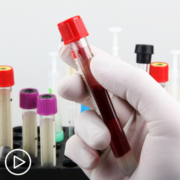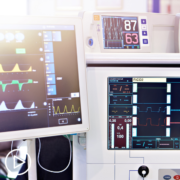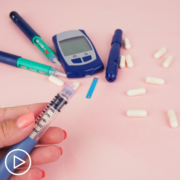Expert Perspective | Disease Modification in Polycythemia Vera
Expert Perspective | Disease Modification in Polycythemia Vera from Patient Empowerment Network on Vimeo.
Is it possible to change the course of disease in polycythemia vera patients? MPN specialist and researcher Dr. Lucia Masarova shares an overview of the research in disease modification, discussing her work as the coauthor in an article entitled Moving Towards Disease Modification in Polycythemia Vera, recently published in the journal Blood.
Dr. Lucia Masarova is an MPN Specialist and Assistant Professor in the Department of Leukemia at The University of Texas MD Anderson Cancer Center. Learn more about Dr. Masarova.
Related Programs:

|

|

How Molecular Markers Affect MPN Treatment | Advances in Research |
Transcript:
Katherine Banwell:
Dr. Masarova, you are a coauthor in an article entitled Moving Towards Disease Modification in Polycythemia Vera, which was recently published in the journal Blood. Can you share some of the highlights of the article and what it means for PV patients?
Dr. Lucia Masarova:
Disease modification in polycythemia vera. I’m so excited finally being talking about this because we’ve been really, really, really so hungry for this term, although we still don’t know what it means.
So, we group together with lots of experts in the myeloproliferative neoplasm field and try to brainstorm and put together, “What does it actually mean?” And to me, and to all of us, it was to offer our patients the normal or not-normal lifespan without the consequences of the disease that they face. Because we historically divided polycythemia vera into high-risk or low-risk disease based on the age or previous history of thrombosis or clotting complications.
However, there is a huge area of patients that wouldn’t have either, and still suffer tremendously a bad quality of life, and ultimately also face the disease progression to myelofibrosis, which is the most actual complication of long-term polycythemia vera duration.
So, the concept of disease modification would be to actually prevent the complications to even occur. To allow our patient to live free of having the fear of living with a thrombosis or clotting complication or ultimately progress into myelofibrosis. We have to learn how to get there. What are the relevant endpoints of tools for us to utilize to really understand? We have learned a lot from seeing what we call molecular remissions, or control of the JAK2 mutation with certain medications, for example, interferons or latest ruxolitinib (Jakafi), the JAK inhibition, where the decrease of the allele burden, which represents the disease, is correlated with better outcome.
So, that is something that we have to be learning down the road with a longer follow-up. But that basically triggered us to focus on what can we do better? How do we prevent this from even happening rather than only controlling the historically main points of the disease which are presented by the blood counts symptoms and display? And where we are actually failing quite a lot of patients because despite them having a control count, they still don’t have a happy life, and lots of them suffer and complain.
So, this is something to be learned, and this is opening the disease modification not only for polycythemia vera, but also for all patients with myeloproliferative neoplasms, which have a little bit of a different feeling in the whole myeloid malignancies field. Because it is a very long disease, and it could evolve and change, and only now we starting to understand what does actually happen there. Why some people could live for 30 years, and never face any consequences, and the others would progress very fast?
So, disease modification would normally allow us to develop and learn more tools and better biomarkers, but also focus on drugs that are really needed to help with these long-term outcomes of our patients.




























